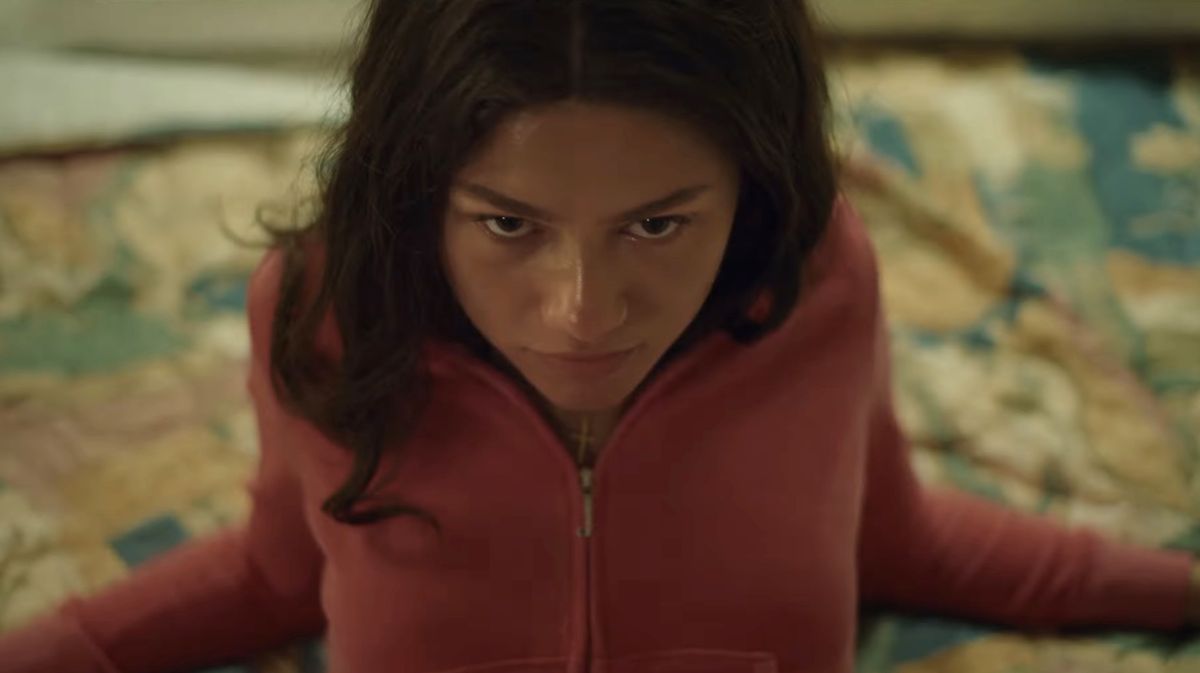Fashion
Forget the tennis, ‘Challengers’ is a fashion film

More so than any other sport, tennis and fashion are intertwined. Tennis aces are courted (pun intended) by luxury fashion and lifestyle brands for their advertising campaigns, from Emma Raducanu for Tiffany to Carlos Alcaraz for Louis Vuitton and Jannik Sinner for Gucci. So in many ways, it’s unsurprising that Luca Guadagnino’s new tennis film, Challengers, starring Zendaya, Josh O’Connor and Mike Faist, is one of the most stylish movies of the past year – and will surely find a place in the fashion film hall of fame.
You could be forgiven for assuming that Challengers doesn’t have a costume designer. After all, it’s not a period romp or a sci-fi fantasy. But it does. And the very fact that Guadagnino tapped J.W. Anderson, the British wunderkind currently at the helm of luxury fashion house Loewe, to be the film’s costume designer speaks volumes about how important fashion is to it (he’s also working with the director on his next film, Queer, based on the book by William S. Burroughs). Because fashion and tennis – and the lifestyle that comes when you are at the top of your game – had to be just right.
From the off, fashion is centre court (sorry). In 2006, when the trio of main characters first meet at the Junior US Open, it’s at a party thrown by Adidas and hosted by Tashi as its face. Assessing the branded surroundings, Patrick (O’Connor) makes a barbed comment about how the up-and-coming tennis star Tashi will have her own fashion label and a foundation before long. When Tashi meets the boys at their hotel room later that night, she’s in hot pink Juicy Couture. In the present day, at the Challenger match, Art’s tennis whites by his presumed sponsor, Uniqlo, are frequently focused on. Tashi’s Loewe handbag collection is also omnipresent, while a birds-eye view shot of her Chanel espadrilles seeks to emphasise her relative power.
Yet it’s in the unbranded costumes that we really begin to understand who these characters are. So often in film, it’s about showing as much as telling. One way that directors and costume designers do this is via the fashion – it’s there to tell us something about the characters and who they are as people, what they care about in life and what their ambitions might be.
At the beginning of the film, Tashi is a bright young thing with an exciting future ahead of her. As a girl of the moment she’s dressed in a strapless royal blue jacquard mini-dress with a tulle underskirt (inspired by Anderson’s autumn/winter 2020 collecti0n), with the swishing of her skirt on the dancefloor at her party epitomising her joie de vivre. Later, when she’s had to put her own tennis ambitions behind her to live vicariously through her husband, Art, she’s more business-like, in shirts and trousers. The couple’s wealth is signalled through cashmere and silk, with a muted colour palette of neutrals and elegant gold jewellery, it’s the epitome of “quiet luxury”. Fashion is also used to emphasise the difference in attitudes to wealth by the two male leads: while Patrick is a reckless playboy who could claim his inheritance whenever he wants, Art is self-made and careful, neatly unfolding his tennis whites, while Patrick’s are two-day’s old and smelly.
Sometimes, the costumes are used in a louder way – to really drive a point of the plot home. We see this when Patrick shows up to training wearing Tashi’s “I TOLD YA” t-shirt after a pivotal plot twist (fans rejoice, Loewe has released it as a capsule collection). The tee was reportedly inspired by John F. Kennedy Jr. wearing a similar slogan in the 1990s, with the film keen to highlight the Americanness of its plot – is there anything more associated with the so-called “American dream” than the wealth and fame that comes with being successful at sport? It’s also evident in the scenes in which Tashi and Patrick spar with each other sexually, as she’s visibly bra-less, in contrast to the more buttoned-up looks she reserves for her husband Art.
You could even interpret Tashi’s Cartier necklaces, one a crucifix, the other two circles entwined together, one golden, one diamond-encrusted, as symbolic of the love triangle and her role in the Holy Trinity. At one point during an argument with Art, she even asks him, “Who am I, Jesus?” to which he answers, of course, “Yes”. Game, set, match.











